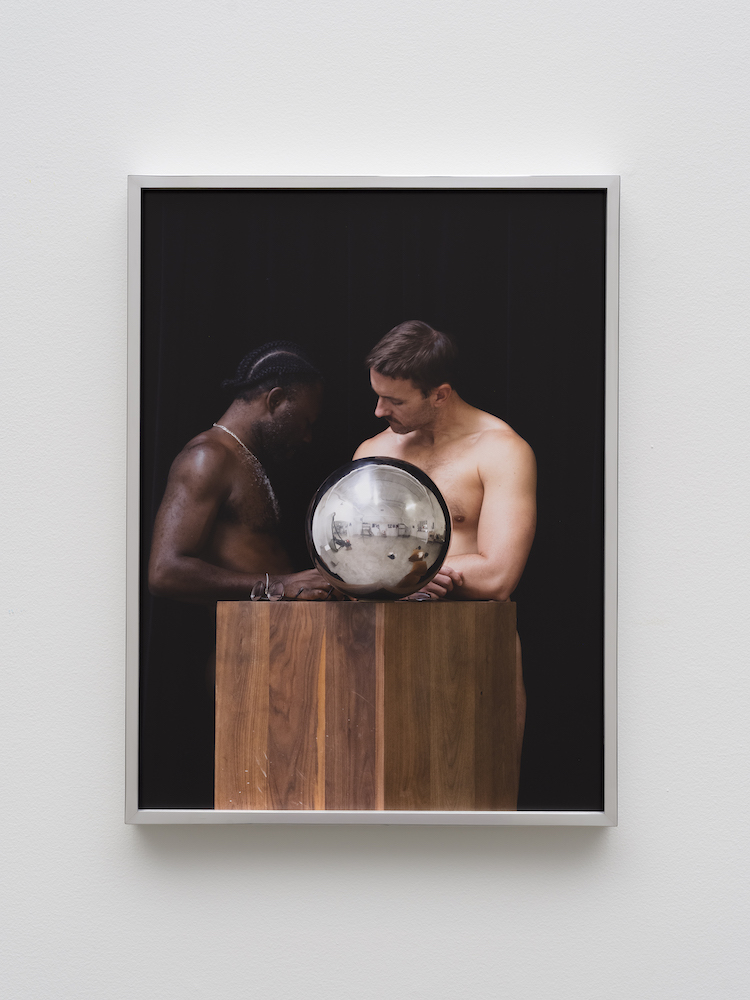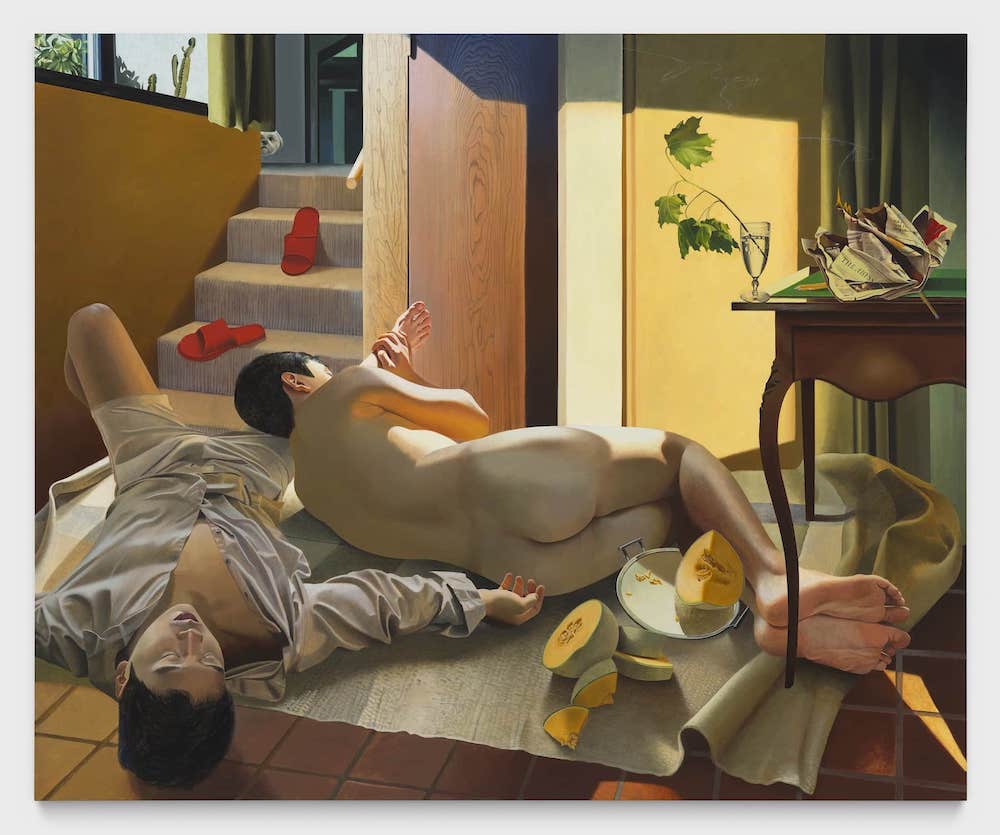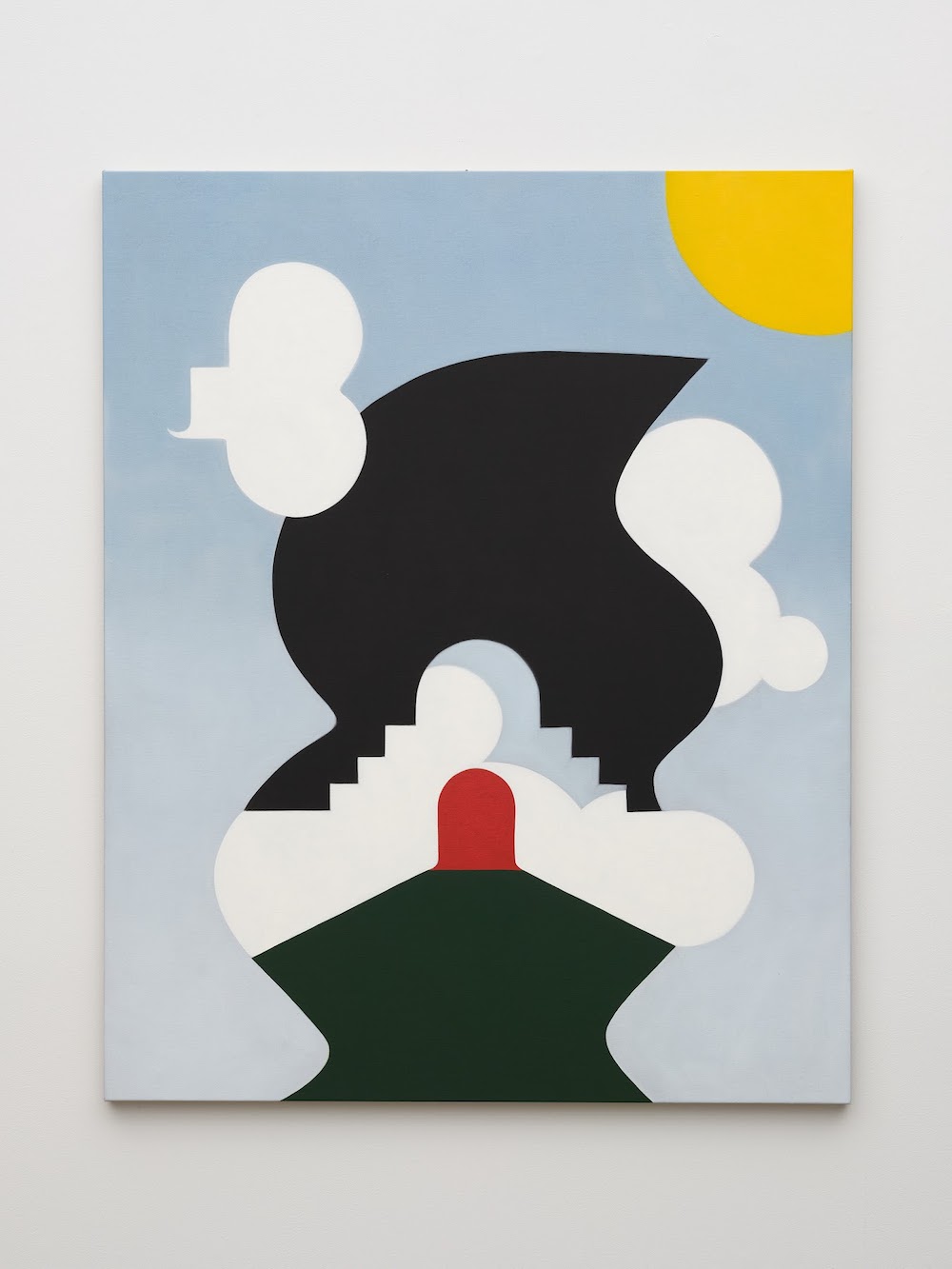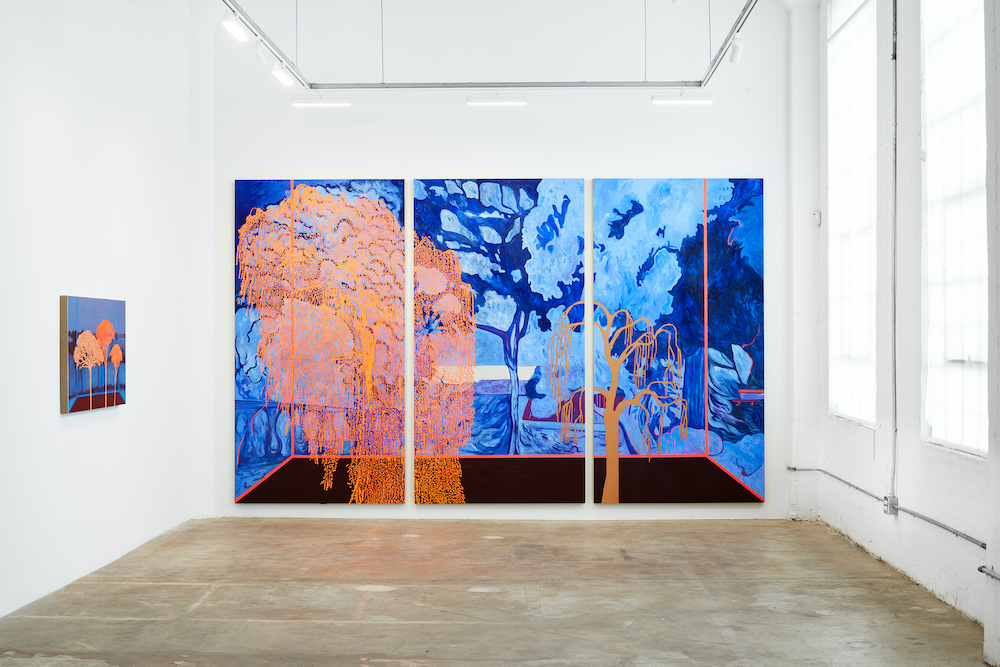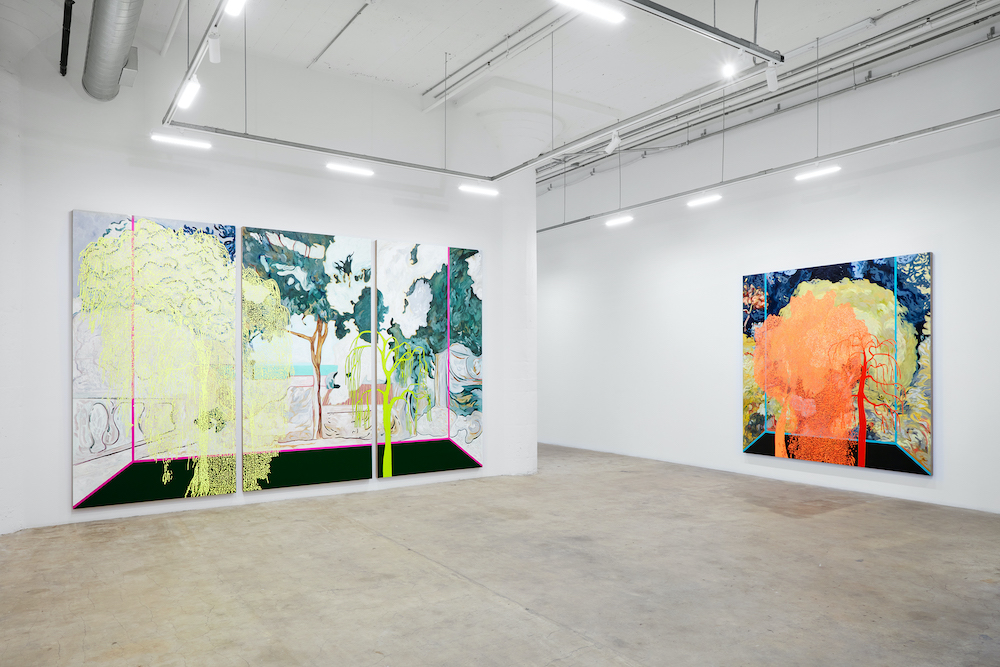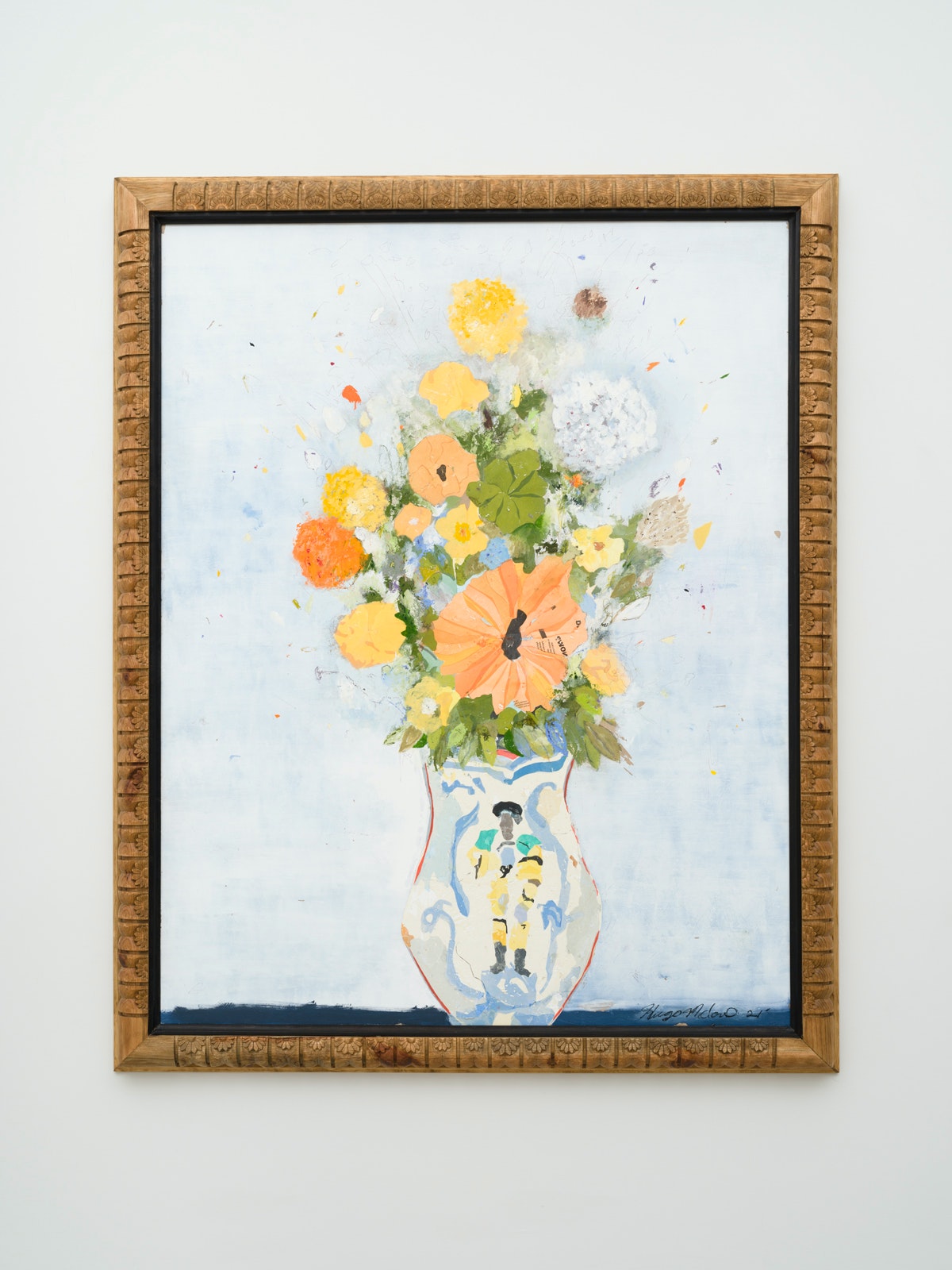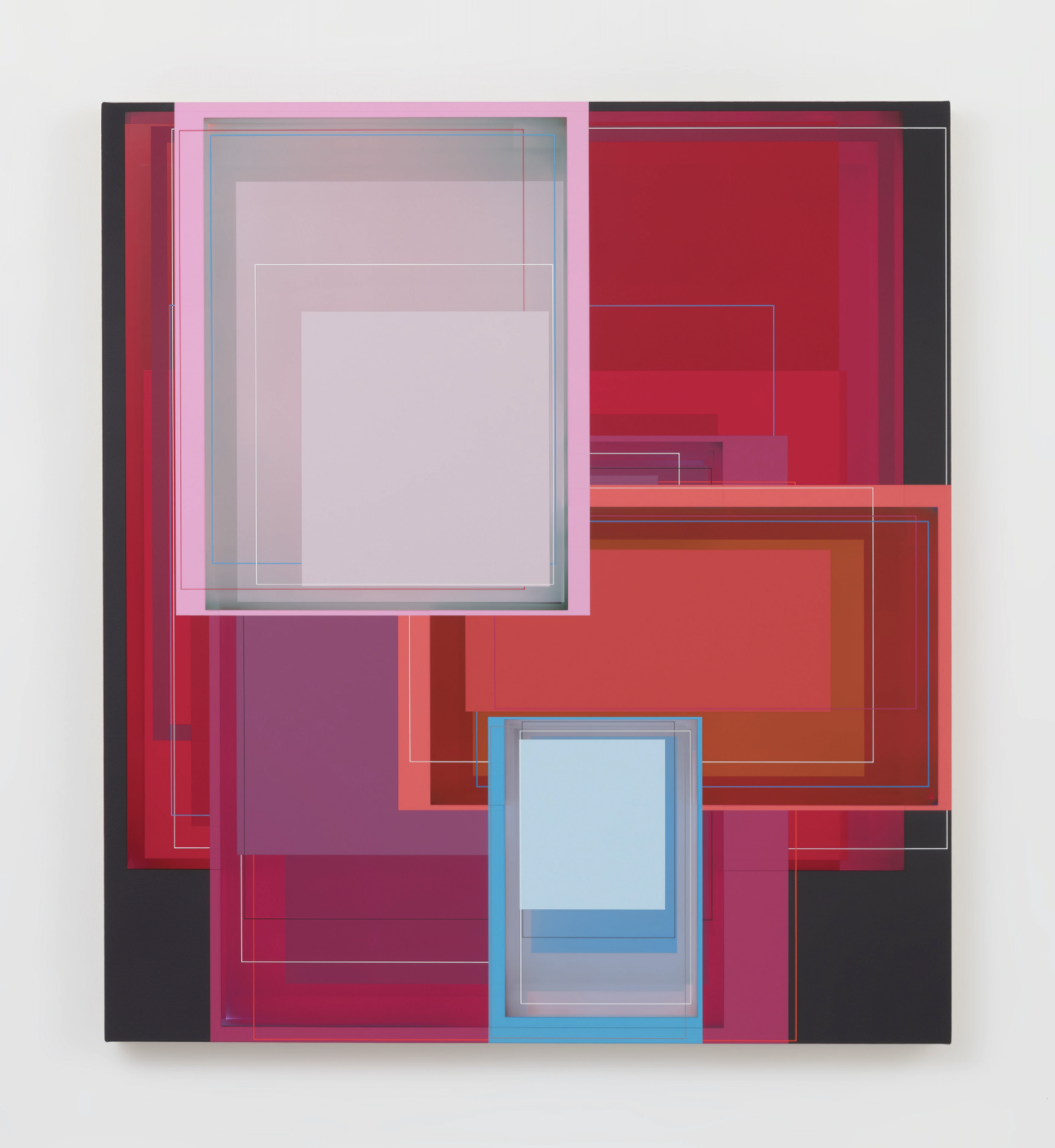Your cart is currently empty!
Tag: vielmetter
-

Paul Mpagi Sepuya
at VielmetterThe title “positioner” refers to the photographer’s inclusion of himself in several of these photos as he positions his models, most of which are queer men and women. These are a reflection on studio portraiture as a specific social context. They explore the relationship of photographer to model, not just on an interpersonal level, but as it reverberates within the context of the studio and the artist’s practice. The content is not intimacy, per se, but the care, communication, and technique that go into capturing it. These are continually rewarding on conceptual, formal, and psychological levels, which reveal how all of the above are also intertwined.
Paul Mpagi Sepuya: POSITIONER
Vielmetter Los Angeles
1700 S. Santa Fe Ave., #101
Los Angeles, CA 90021
On view through July 19, 2025 -

KYLE DUNN
at VielmetterKyle Dunn celebrates the languid vibe of siesta culture through figurative and still-life pieces. The works on view use acrylic to replicate the luminosity of the Old Masters’ oils, giving Vermeer illuminated by the harsh New York summer sun.
Siesta (2024) depicts two naked, reclining Asian men napping beside an unfinished plate of cut cantaloupe. More details emerge upon further observation: a burning newspaper and a tiny dog that peers down from the top of the stairs. Flames reappear in Still Life With Garlic and Money (2024), cutting through the stillness and serenity with tension, foreboding, and even a sense of danger.
I loved so much about this show: the sexualized Asian male body (something severely underrepresented in society at large), Dunn’s mastery at painting every surface, and the details hidden in reflections and shadows. If you look hard enough, you can find that little devil.
-

Math Bass
at VielmetterReminiscent of the visual languages of midcentury graphic design, children’s book illustrations, and corporate branding, Math Bass’s paintings are unnervingly poppy. The language consists of cartoonishly pared-down symbols (alligator, cloud, speech bubble, to name a few) with a grammatical structure, but no fixed definitions, so the viewer is left to give up on interpretation. After getting past the initial hurdle of my visual associations to ubiquitous flat vector graphics, I am drawn in by the paintings’ irregularities. The edges of objects vibrate and what appears straight or smooth is wavy and hand-touched. I am also interested in the visual rhymes. Smoke, speech bubbles, and moons bounce around each other, borrowing, and taking forms, space, and modes of rendering. These paintings reward close looking—abstracted leg-like shapes shine, while the rest of the painting is matte. The audio sculpture opens up an otherwise closed vernacular, creating a phenomenological experience of oneself as shrunken in a tranquil and subsequently frightening forest, an element of fantasy that the paintings alone do not provide.
-

GALLERY ROUNDS: Whitney Bedford
Vielmetter Los AngelesDepicting the passage of time and light through the color of a repeated landscape, Whitney Bedford’s “Vedute” immerses viewers in a stunning but haunting forested world.
The landscape in each large-scale work depicts the same scene mid-morning, mid-afternoon, and evening. The palette changes in each iteration but the still beauty of the environment remains unchanged. Despite that beauty, Bedford conjures a sense of the ominous—a spiritual lamenting even within her hot corals, steaming pinks, and periwinkle blues.
Tree branches curve and droop, colors edge on the surreal. The light on a body of water behind the forest is cast in lustrous but unnatural shades, creating a hallucinatory dichotomy for the viewer to unravel. Are we seeing a vivid, patterned, fecund landscape or a nightmare of ecological change?
Veduta (Bonnard Mediterranean Afternoon) Triptych offers three 114 x 60 panels featuring a drooping tree in dark royal blue on the right, and a lacey weeping willow in pale blue to the left in the foreground. The dominant shades in the forest behind these trees are white and brown, the body of water in the far background a shocking turquoise blue.

Whiteney Bedford, “Vedute” installation view, 2022. Courtesy of the artist and Vielmetter Los Angeles. Bedford’s morning triptych in the same dimensions reveals a drooping tree in pink, the weeping willow a hot pink; background trees an olive green and a white swirl, distant water an eerie yet transcendent green.
The midnight triptych presents this scene with a haunting blue glow in the background forest, a ghostly opaque white body of water, and in the foreground, an orange willow with a beige drooping tree.
Along with these large landscapes, there are smaller works to savor. Veduta (Lacombe Red Pines), an ink and oil work on linen and panel, reveals pines like towering blossoms, the sky lush gold. Veduta (de Staël The Route) is a feast of pink and magenta blazing from a dark navy landscape boxed within lines of chromakey blue. (Both works 2022).
In each work, Bedford creates a masterful sense of beauty intertwined with loss, the Edenic shifting to the apocalyptic as we watch days pass in impotent awe.
Whitney Bedford: Vedute
Vielmetter Los Angeles
On view through February 25, 2023 -

GALLERY ROUNDS: Mary Kelly
VielmetterMary Kelly‘s show “Corpus” at Vielmetter Gallery includes thirty framed pieces which alternate between image in one frame and text in another. The name of the show, “Corpus,” refers to the work being a collection of writings, yet has a double meaning built in as the writings concern the aging female body–particularly Kelly’s. True to Kelly’s role as a leading feminist conceptual artist, the work provides a personal testimony of the emotional distress middle-aged women experience in a sexualized and shallow society where the gaze offers only fear of judgement and scrutiny.
Each panel of writing contains a scenario—written in Kelly’s own handwriting—of an experience of memorable vulnerability. The handwriting is written in white on glass that floats above a black surface. Certain words or phrases are highlighted in red (such as “female figure,” “feel silly,” and “being older”) so that the viewer may gleam meaning without fully reading the text. The experiences include birthday parties, doctor’s office visits, dance floors, restaurant dates with friends, and sexual experiences with men. The collection of writing feels diaristic; each scenario uncomfortably self-conscious.

Mary Kelly, Interim, Part I: Corpus, Menacé (installation view), 1984–85, laminated photo positive, silkscreen, acrylic on Plexiglas, 30 panels, 122 × 91 × 6 cm (each). Courtesy the artist and Vielmetter, Los Angeles. With each segment of writing is a corresponding image on glass floating above a white surface. The images are of a piece of clothing or an accessory such as a handbag, shoes or lingerie, and they mimic scientific diagrams. Thus, the piece of clothing becomes the evidence to Kelly‘s personal experiences. Words such as “appel” and “supplication” are written underneath the image of the article of clothing and have a checkmark or cross next to the clothing to indicate success or failure. Both the handwriting and images are on glass floating above a contrasting background so that shadows create duplicated images.
“Corpus” explores emotions about the female experience which are usually left unspoken. Kelly is able to elevate mundane memories so they become significant moments and impressions which cease to be forgotten. Even though the show is deeply personal there is a universal resonation, as the insecurities that are explored are intrinsically human.
-

Pick of the Week: Hugo McCloud
Vielmetter Los AngelesWalking into Vielmetter Los Angeles’ sunlit loft, it’s easy at first glance to overlook the series of flower paintings inside as traditional floral still lifes. But the stark white backgrounds, untraditional choice of medium, and emotive compositions belie Hugo McCloud’s skillful mastery of manipulating abject materials into visually stunning forms.
Self-taught with a background in industrial design, it’s obvious that McCloud is a restless experimenter. In “translated memories,” McCloud continues his practice of incorporating plastic merchandise bags to investigate connections between industrialization and the natural world. Delicate slivers of colored plastic making up pots, leaves, and petals are cut with a razor and applied with heat piece by piece — at the end of the painstaking process, the plastic looks as liquid as a brushstroke.
As I inspected the surfaces of the works, I found it nearly impossible to discern where the swaths of plastic ended and the paint began. To me, the ease with which the plastic blends into the oil and wood panels echoes the lack of separation between the natural world and manmade pollutants. The temporality of the flowers contrasts beautifully with the tenacity of the non-biodegradable plastic to create tension and meaning beyond their physical forms. In turn, the works double as collaged records of urban decay and economic displacement in the communities from which the materials were collected.
The most compelling aspect of the exhibition aside from the exquisite use of plastic is the multifaceted biographical interpretations of McCloud’s upbringing and his time in quarantine. Inspired by elements of his father’s sculptures and his uncle’s floral still lifes, McCloud mimics artistic lineages on both sides of his family and marries disparate practices to pay homage to his culturally mixed identity. By titling the works after the dates they were created, the artist also creates a visual diary of his quest for calm and beauty over the last year of his life.
Further, McCloud capitalizes on universal memories of seeking stillness and reprieve from the chaos of the pandemic years. The flowers, their fleeting beauty suspended, capture the feeling of the entire world grinding to a halt and provide a meditative viewing experience. Still, the flowers are in flux. Budding stems and unfinished lines suggest the potential for newness and growth. Different views of the same bouquets over time signal the ever-forward passing of seasons and a sense of long-term hope. We too, McCloud reminds us, will change with the times.
Vielmetter Los Angeles
1700 S Santa Fe Ave, #101
Los Angeles, CA 90021
Thru Jan. 8th, 2022 -

Pick of the Week: Patrick Wilson
Vielmetter Los Angeles[et_pb_section][et_pb_row][et_pb_column type=”4_4″][et_pb_text]There’s no such thing as an alright abstract painting. They fall, without exception, into two categories: great and garbage. And for whoever’s looked at an abstract artwork, smugly harrumphed and muttered, “I could do that,” I’d point to any of the works hanging in Patrick Wilson’s “Keeping Time,” and ask, “Could you really?”
Abstraction is difficult enough to get right, but hard-edged, color-field abstraction? Doubly so. There’s a reason why the critic Clement Greenberg, by the late 1950s, had more or less eschewed the works of the “action” painters like Jackson Pollock in favor of color-field abstraction (what Greenberg called “post-painterly abstraction.”) Color-field abstractions, like the works of Patrick Wilson, boom or bust on the artist’s ability to convey through color and balance alone.
In this regard, “Keeping Time” is a stroke of mastery. Wilson’s frame within frame style always manages to keep you on your toes as the works, never culminating, constantly build and subtract within themselves. We can see this effect in a work titled Afternoon Breeze (2020). A patch of blue, in one place vibrant, melts into the red background with a mild transparency, and is harshly bisected by a think pink frame. Nearby, a pink and orange frame overlaps a field of subtly gradating maroon and sienna, capturing on one end a shred of the hot pink background. Finally, the offset canvases abutting at a hard right angle throw the entire work into a rectilinear staccato.
But the peak of the exhibition lies at the end of the gallery, with a work titled Night Bloom (2020). Here, Wilson does it all. While the blocks of color – pink, lilac, sky blue, maroon, merlot, etc. – form a brilliant and vivid cascade, the triumph is in the detailing. All throughout the painting, Wilson uses millimeter thick lines to create boundary after boundary, stacking them one atop another, obscuring some with the fields of color and cutting straight across others with reckless abandon. But still, it all stays within the canvas. That final boundary remains unchallenged, and everything you need to see is within it.
“Keeping Time”, on view at Vielmetter Los Angeles until April 24th, is a high-wire act – and Patrick Wilson doesn’t stumble.
Vielmetter Los Angeles
[/et_pb_text][/et_pb_column][/et_pb_row][/et_pb_section]
1700 S Santa Fe Ave #101, LA, CA, 90021
Thru Apr. 24, 2021; Appointment Only
